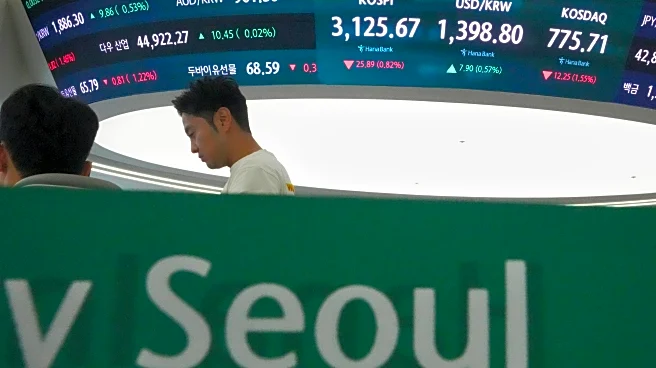Rapid Read • 9 min read
India and China are experiencing a thaw in their historically tense relations, influenced by U.S. tariff policies under President Trump. Previously, India viewed China as a primary adversary, especially after a deadly attack in Indian-administered Kashmir involving Chinese defense systems. However, recent geopolitical shifts and Trump's tariff wars, particularly a 50% duty on Indian imports, have prompted India to reconsider its stance towards China. This shift is marked by high-level meetings between Indian Prime Minister Narendra Modi and Chinese officials, including Foreign Minister Wang Yi, where they discussed confidence-building measures and border trade facilitation. The two countries are exploring ways to ease tensions, such as resuming direct flights and facilitating border trade. Modi has also accepted an invitation to attend the Shanghai Cooperation Organisation summit in China, signaling a potential shift in regional alliances.
AD
The warming relations between India and China could significantly alter the geopolitical landscape in Asia, potentially undermining the U.S.-led Quad alliance, which includes India, Japan, and Australia. This development could lead to the formation of new Asian trade blocs, reducing India's reliance on the U.S. market amidst rising tariffs. For China, improving ties with India could enhance its influence in the Asia Pacific, challenging U.S. dominance. The shift also reflects India's strategic autonomy, balancing relations with major powers without aligning too closely with any single bloc. This realignment could impact global trade dynamics, as India and China explore increased bilateral trade and cooperation, potentially softening the impact of U.S. tariffs.
As India and China continue to improve relations, there may be further developments in trade agreements and strategic partnerships. The U.S. may need to reassess its approach to India, especially if India aligns more closely with China on issues like development financing and multilateral reform. The Quad's role may evolve, focusing on broader regional cooperation rather than solely countering China. The upcoming Shanghai Cooperation Organisation summit could provide further insights into the evolving dynamics between India and China and their impact on U.S. influence in the region.
The rapprochement between India and China highlights the complexities of global diplomacy, where economic interests often drive strategic decisions. This shift underscores the limitations of unilateral tariff policies and their unintended consequences on international alliances. It also raises questions about the future of the Quad and its ability to adapt to changing geopolitical realities. The evolving India-China relationship may serve as a case study in balancing national interests with global partnerships, offering lessons for other nations navigating similar challenges.
AD
More Stories You Might Enjoy












